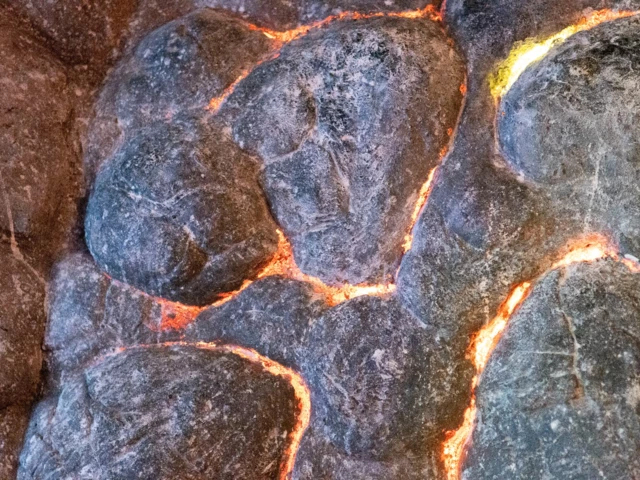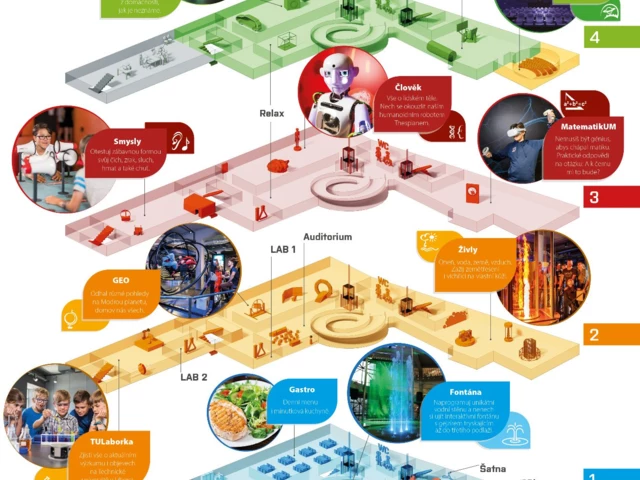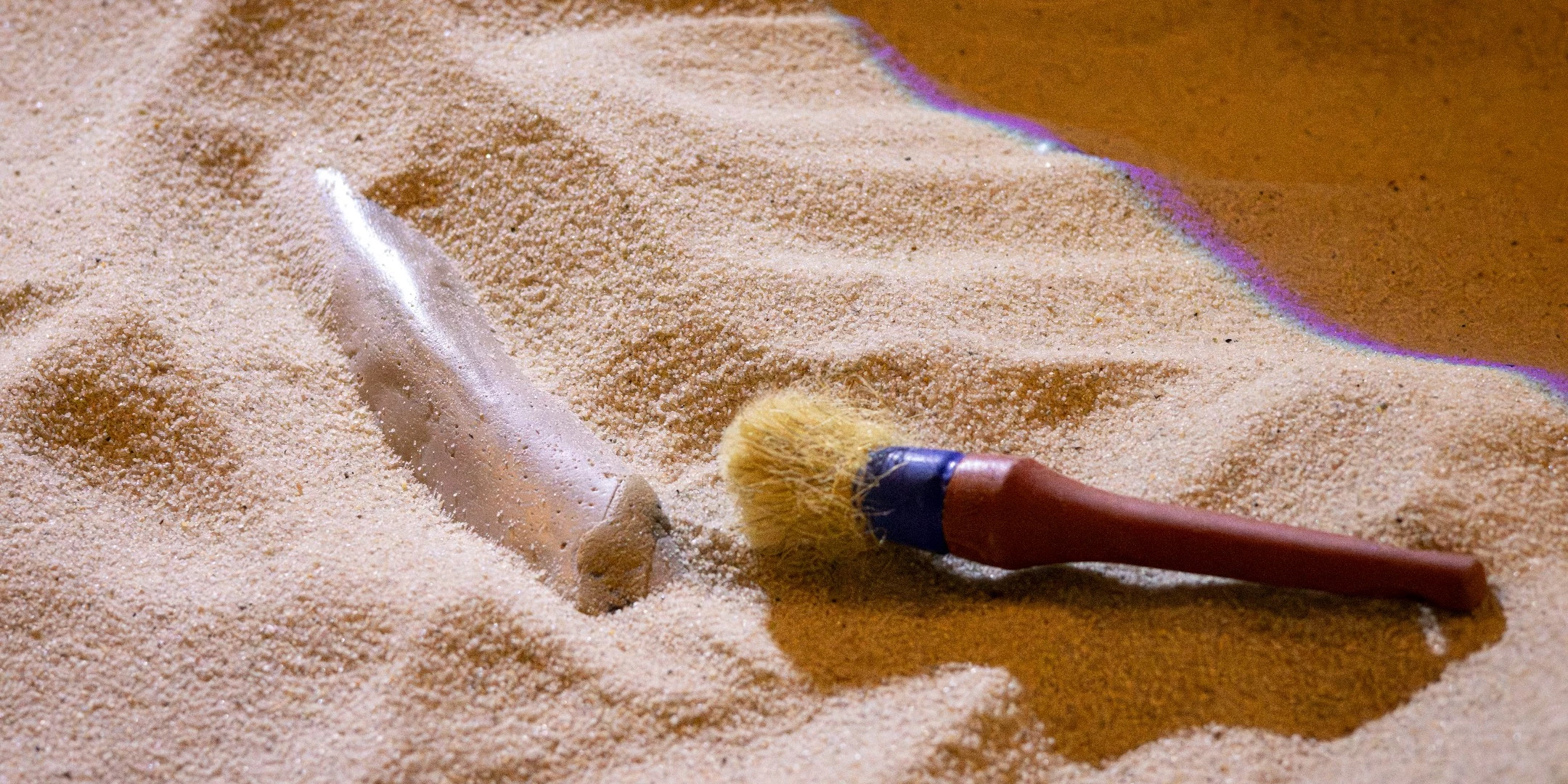
Geolab
The non-living environment of our planet, the processes that take place within, its structure and historical development - these are the main themes of the GEOLAB exhibition.
You can explore the different stages of the Earth’s development together with various animals that today we only encounter as fossils. Those brave enough can even try caving in our crawlspace!
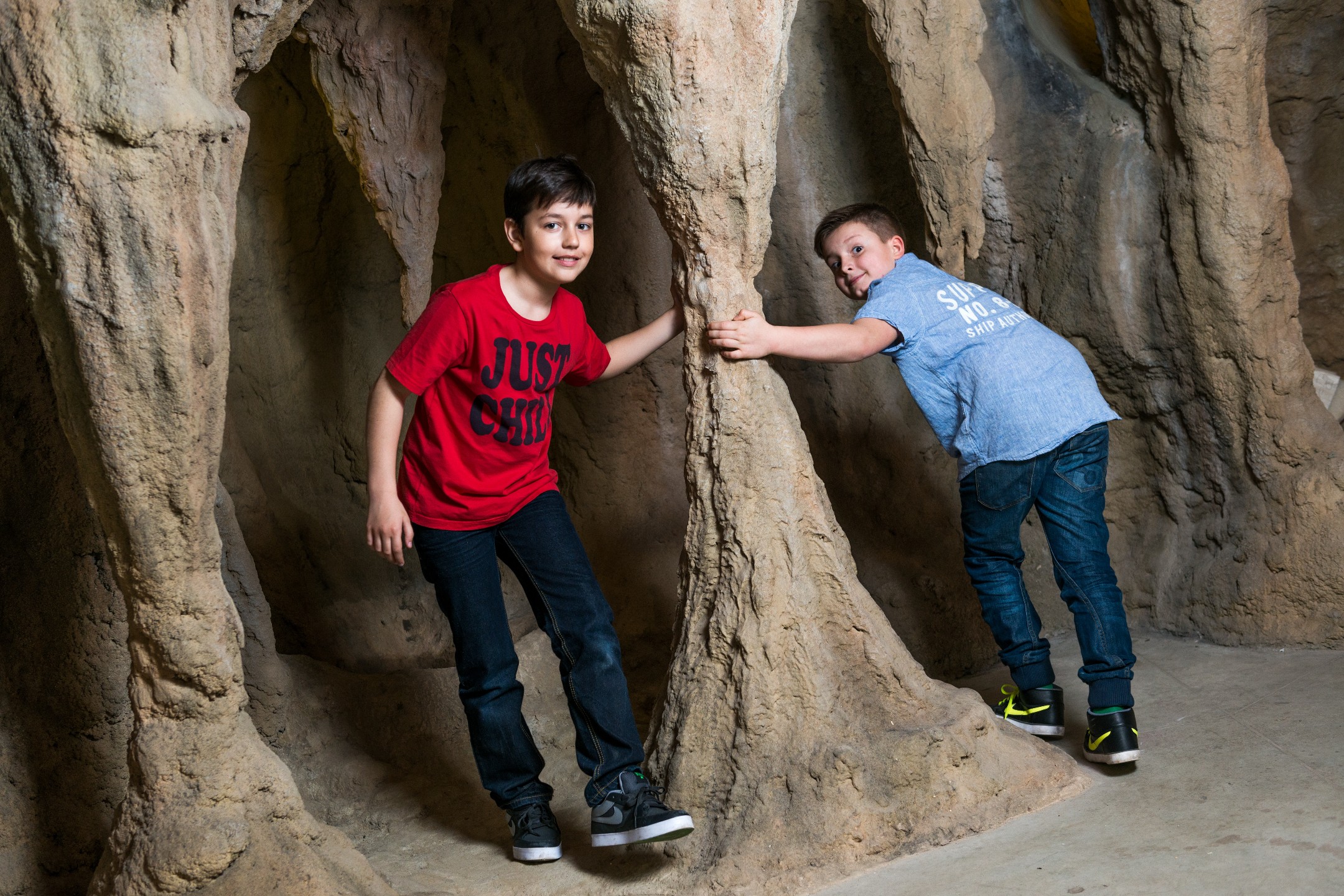
Let the earth swallow you up!
The GEOLAB exhibition stands out among the iQLANDIA exhibitions thanks to its unique design. Immediately upon entering the exhibition space, you will feel as if you have just entered a cave. You will come across stalactites that you can help grow, as well as scale models of stunning crystals from a Mexican mine near the mining town of Naica. You can become a caver for a little while and clamber through our crawlspace. Then you will encounter a wall of basalt, a volcanic rock that often solidifies into hexagonal columns.
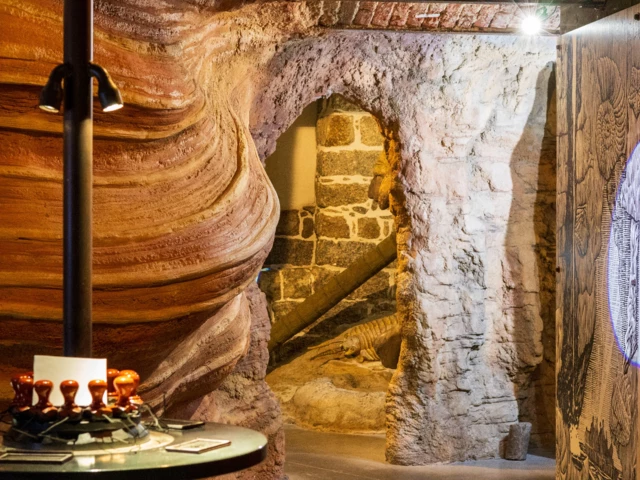
Voyage into the distant past
In our time machine, you can travel a few tens of millions to a few hundred million years back in time. During this journey, you will see how the continents have changed and how there used to be just one supercontinent. You will also discover the ancient creatures that lived on our planet. You can find them all over the exhibition - here a trilobite, elsewhere a prehistoric lizard and who knows, there may even be a prehistoric giant hiding somewhere. Try matching up the creatures you came across with the work of archaeologists as you search for their fossils in the sand.
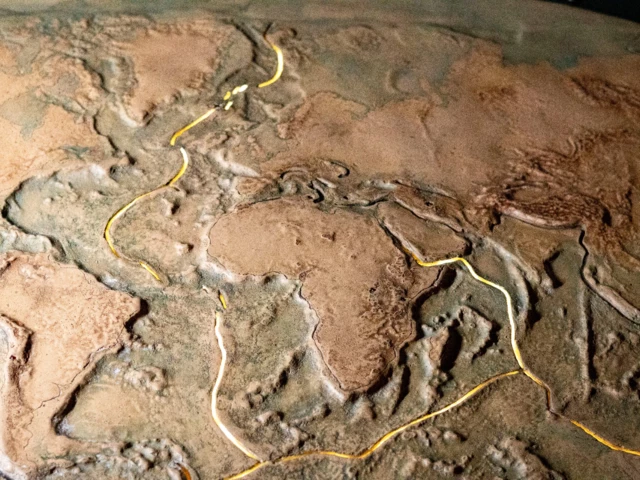
Minerals and geology
Although it may not seem like it, even seemingly ordinary stones can make for fascinating science. One of the first exhibits to welcome you to the exhibition is the mineralogical mini-museum. Inside, you can see a collection of various minerals that differ from one another in appearance, shape and chemical composition. As you move on, you will discover an exhibit dedicated to karsts, another will show you the possible shapes of a river, and you will learn why the Czech Republic is geologically such an interesting part of Europe.
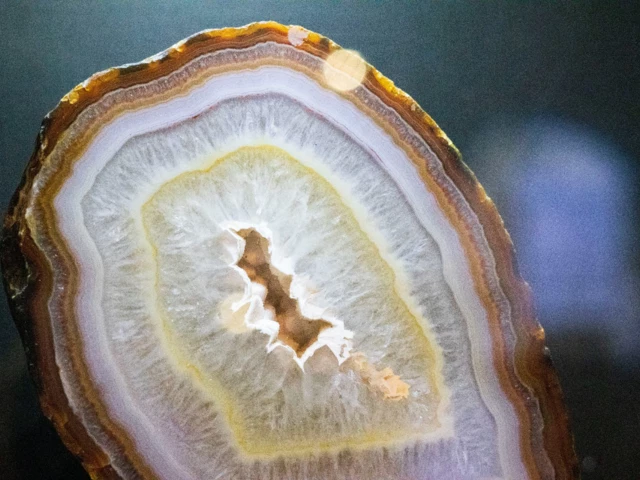
Tectonic plates and volcanoes
At the end of the exhibition you can find an interactive map that shows you the tectonically active areas of the world. Here you can see some of the ocean rifts and mountain ranges formed by the movement of tectonic plates. Earthquakes and volcanic activity are also linked to the movement of tectonic plates - the most important volcanoes can also be found on the map. And did you know that there are also mud volcanoes? We have a small mud volcano in the GEOLAB!
